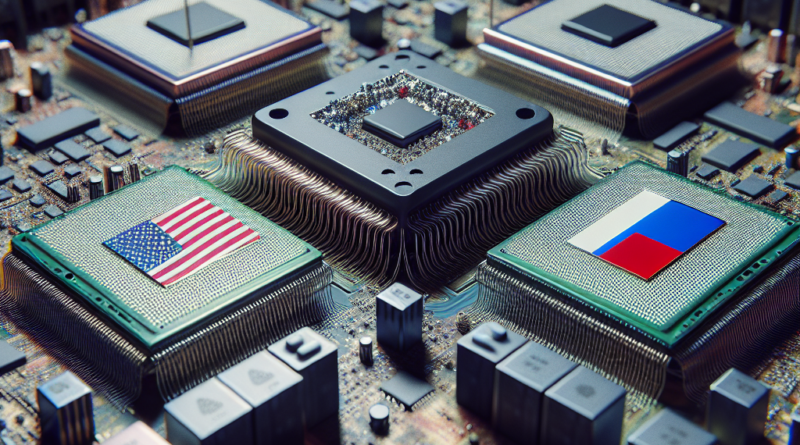Not Just the US and China: Russia Enters the Chip War
Russian Microchip Industry: Growth and Priorities
The Russian microchip industry is poised to experience significant growth in the coming years, supported by massive government backing.
This sector, crucial for Russia’s military efforts in Ukraine, focuses on increasing the production of less advanced chips rather than aiming to become a leader in the high-tech microelectronics market.
Currently capable of producing 90-nanometer chips, Russia is exploring mass production of 65-nanometer chips, while the US and China are advancing towards much more sophisticated technologies.
Since the invasion of Ukraine in February 2022, enhancing microchip production capabilities has become a top priority for the Moscow government, given the vital role of these components in various modern warfare applications, from missiles to attack drones.
According to a Kept report, the Russian microelectronics market is set to grow by 15.2% by 2030, primarily driven by subsidies, loans, and other public incentives.
Government Support and Industry Development
The Russian Ministry of Industry and Trade allocates hundreds of billions of rubles annually for microelectronics development.
Involvement of private partners could accelerate sector growth, but it requires greater transparency on investment returns.
The current Russian microelectronics industry has been virtually built from scratch since the early 2010s, after the collapse of the Soviet industry in the 1990s, unable to compete with international manufacturers.
Today, Russia has three plants capable of large-scale microchip production: Mikron, Angstrem, and Milandr, all located in Zelenograd near Moscow.
However, prior to the Ukraine invasion, the country was annually importing chips worth about $1 billion from China, Taiwan, and Malaysia.
In 2023, the Russian Ministry of Industry and Trade outlined a roadmap to launch mass production of 28nm chips by 2028 and 14nm chips by 2030.
However, Russia primarily needs less advanced microelectronic components suitable for immediate military needs.
Challenges and Investments
The Russian government has pledged to allocate 100 billion rubles to increase chip production capacity.
While this may be sufficient to ramp up production of less advanced chips needed for armament in Ukraine, it does not represent a technological breakthrough.
The main obstacle to sector advancement remains limited production capacity.
By the end of the year, Russia aims to install its first photolithography machine for 350nm chip production at one of the Zelenograd facilities, marking a significant step forward for the domestic microelectronics industry.
Read also: Financial Crisis: New Market Crash Ahead According to These 3 Signals




